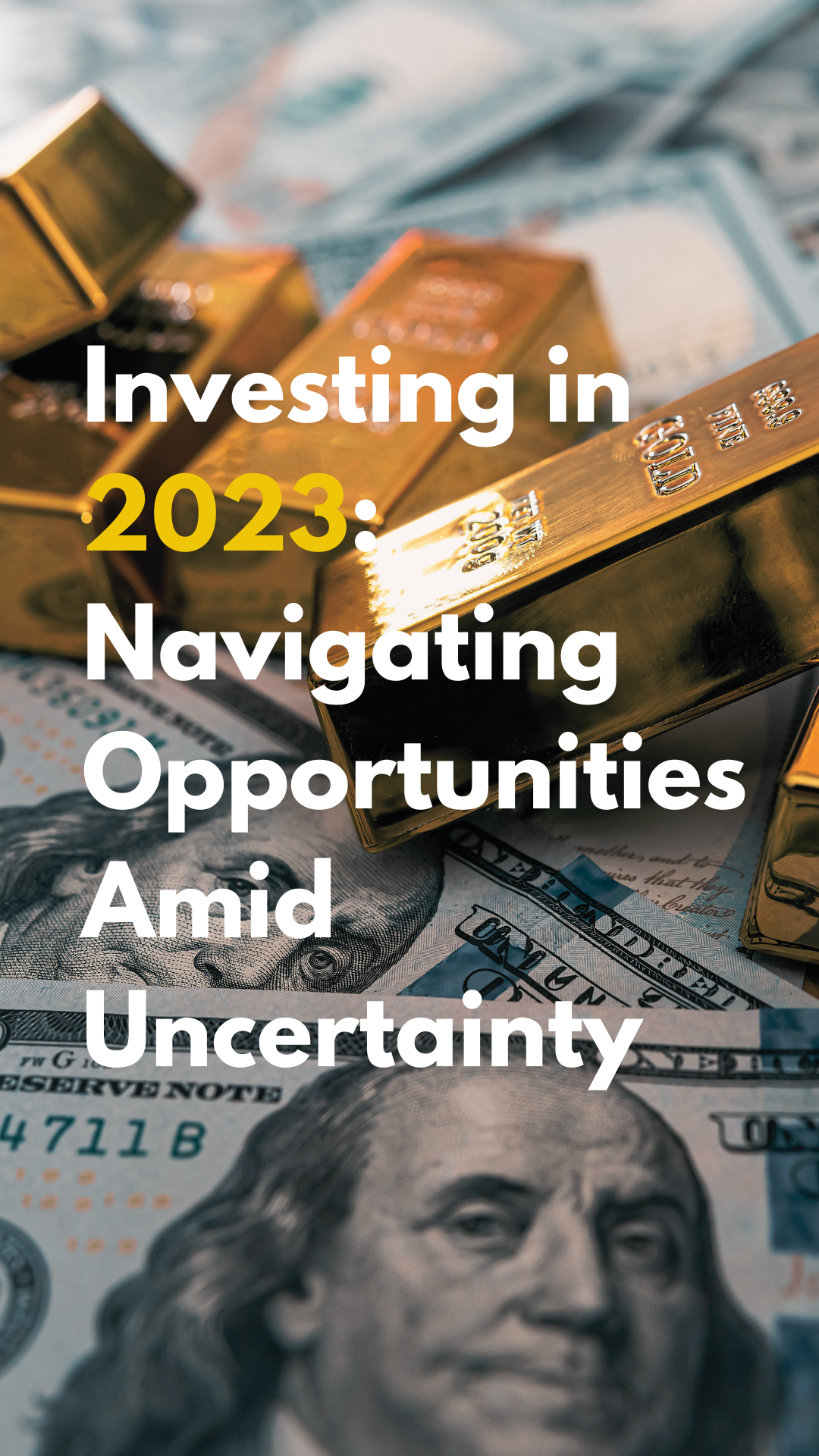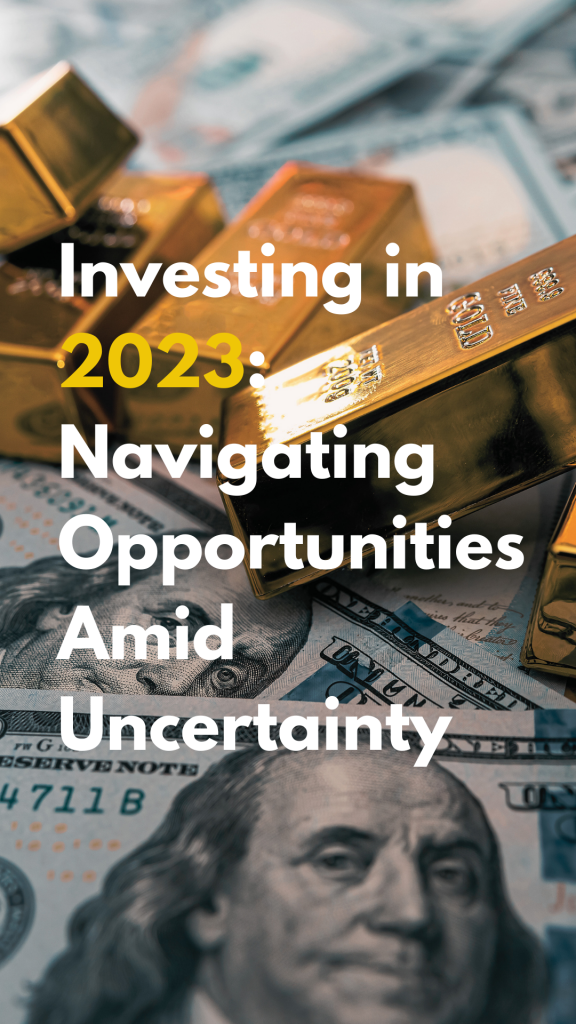

2023 presents unique challenges and opportunities for investors, requiring savvy navigation of markets in flux. With high inflation, rising interest rates, and talk of recession, how should investors approach asset allocation and strategy this year?First, temper expectations for equity returns. Stocks soared the past decade, but high valuations and slowing growth paint a cloudier outlook. Focus on quality companies with solid earnings over high-flying stocks. Seek diversification globally in sectors like energy and healthcare poised to weather volatility.Bonds become attractive as rates rise, offering income potential. Shorter duration, high-quality bonds can limit risk. Floating rate bonds hedge against further rate hikes.
But limit bond allocation – inflation erodes long-term fixed income returns.Commodities like oil and agricultural goods offer inflation protection. Their cyclicality requires caution, but they couldhedge in moderation. Other real assets like real estate can also provide an inflation hedge if purchased wisely. But buy based on fundamentals, not speculation.Elsewhere, crypto remains highly speculative, but a small allocation provides asymmetric upside. Alternative assets like venture capital, private equity, and hedge funds promise return potential for suitable accredited investors. Just temper illiquidity risks.Geopolitical crises bring market uncertainty, but panic selling rarely pays. Invest based on data, not emotion. Upweighting cash temporarily provides dry powder to deploy if compelling opportunities arise. Stay invested, rebalance methodically, and focus on long horizons.While higher risk accompanies market volatility, adversity brings opportunity. Those who prepare prudently, allocate methodically, and keep perspective can still thrive in these turbulent investing times. Patience and perspective will overcome uncertainty.
Marcus by goldman sachs https://www.marcus.com/us/en/savingsYes. Marcus savings accounts are provided by Goldman Sachs Bank USA. Goldman Sachs Bank USA is an FDIC member, which means that funds deposited in Marcus savings accounts are insured up to the maximum allowed by law, which is currently $250,000 for all your individually-owned accounts combined, $250,000 per owner for all your jointly-owned accounts, and $250,000 per beneficiary for accounts with payable-on-death (POD) designations
High Yield Savings Accounts
High Yield Savings Accounts, offer about 4.75% for a year
- American express high yield 4.25% for a year
- Wealthfront
- Ally financial
- Sofi ->4%
- Lending club ->4.25%
Higher fed rate = High savings account rate
Credit Score
800-850 Excellent
740-799 Very good
670-739 good
580-669 fair
300-579 very poor
- Payment history 35%
- Total amount owed: 30%, percentage available and percentage owed
- Length of credit history: 15%
- Blend of credit cards : student loans, mortgages, credit cards, charge cards(amex platinum) 10%
- New credit 10%, hard pulls, new accounts open
How to improve credit scores?
- Pay bills on time
- Keep utilization below 30%, over 30% will reduce credit score (ideally 10% advisable)
- Dont close your oldest line of credit
Call your credit card company and ask for a credit limit increase every 6-12 months

Home loan
- FHA loan less than 20% downpayment
- conventional 97 loan , rewards for high scores, only first time home buyers( or just not have owned a home in first 3 years)x,home cant cost more than $453100, HCOL home cant cost more than $679650, primary residence + pmi(private mortgage insurance) payment till 20% hit
- USDA loan(direct, local lender, ) rural area
- VA loan(best, similar to USDA , no PMI, us veterans only)
Index Tracking ETFs
Buy one ETF that tracks the S&P 500 , index funds
5 index tracking ETFs
- vti
- voo 500 largest public companies,
- vxus(international stock), foreign companies
- vug(risky)
- vt
S&P Global Luxury Index
25.21% yr return
Here are some potentially attractive quantifiable investment opportunities to consider in 2023:
High Yield Bonds
- Corporate bonds rated below investment grade that pay higher yields to compensate for additional risk.
- Yields currently around 7% on average, significantly higher than typical bond yields.
- Allows fixed income diversification from stocks with potential for solid income.
- Focus on short duration 1-3 years and quality issuers to limit risk in volatile markets.
Dividend ETFs
- Equity ETFs focused on stocks with consistent, high dividend yields.
- Yields around 3-4% on average currently.
- Blue chip companies tend to maintain dividends even in downturns.
- Provides equity exposure with downside cushion of dividend income.
- Target sectors like energy, utilities, real estate poised for higher distributions.
Municipal Bonds
- Tax-exempt municipal bonds supply income free of federal and often state/local taxes.
- YTM around 4% currently on average. Higher yield than US Treasuries.
- Federal tax exemption provides advantage for investors in higher brackets.
- Focus on essential service revenue bonds and general obligation bonds for safety.
Chase JP Morgan
Investment time duration recommended to be 3-5 years
Muni Fund- 3.49% , minimum 250k for a year , yield to worst , tax equivalent 5.36%
Parametric US large Cap – loss harvesting – 250k , loss depending on investor (tax benefit + market performance tracks S&P)
Core Advisory Portfolio/ Balanced fund – can be coupled with other investment strategies , offers a return of 8.1% , $10k minimum to invest
Growth strategy – Flagship portfolio, volatility hyper growth to defensive , diversified portfolio, higher return higher risk , minimum $100k for 3-5 years, liquidity anytime no penalty
Large cap Growth strategy +17.3% , last year -25%
The key is pursuing income potential while limiting volatility and risk. There are opportunities across markets in 2023 tailored to different risk profiles and return objectives. Let me know if you need any other investment specifics!